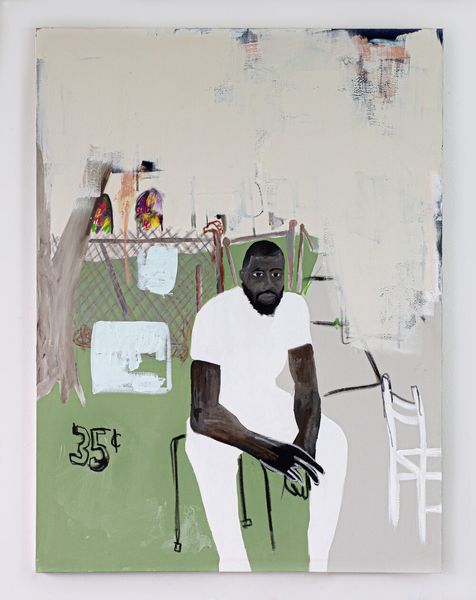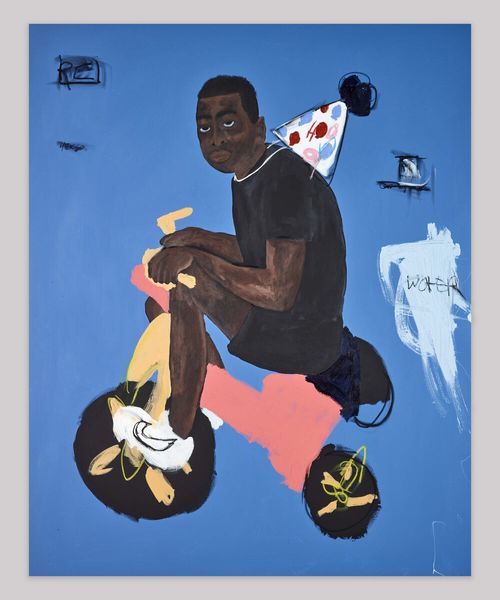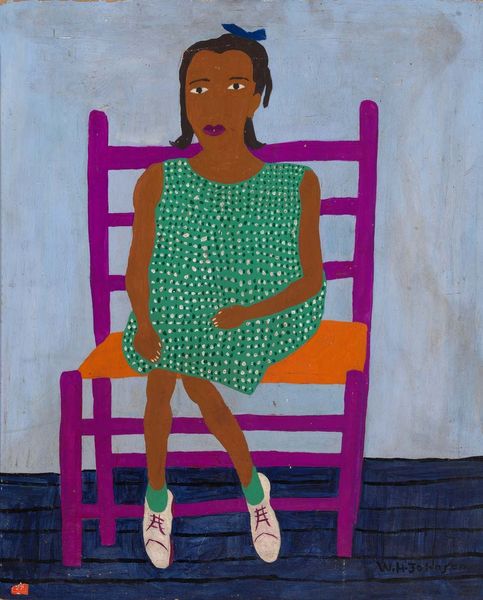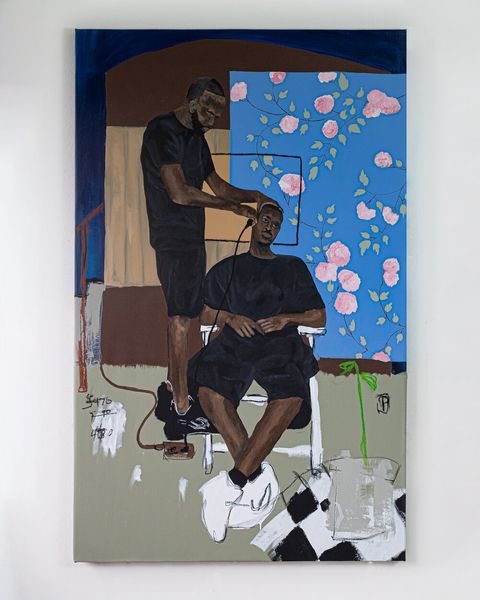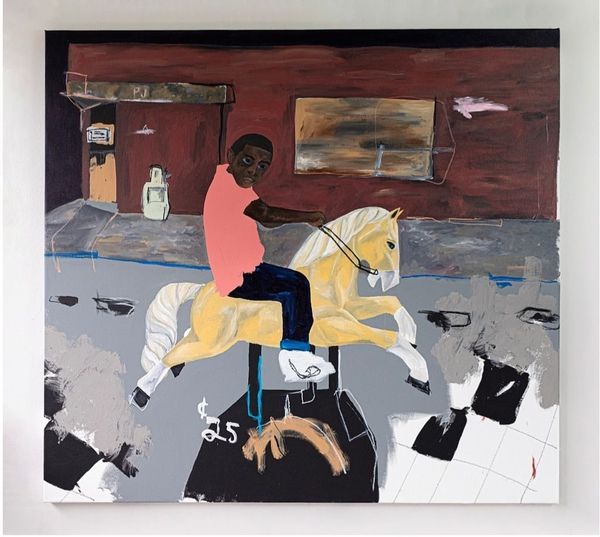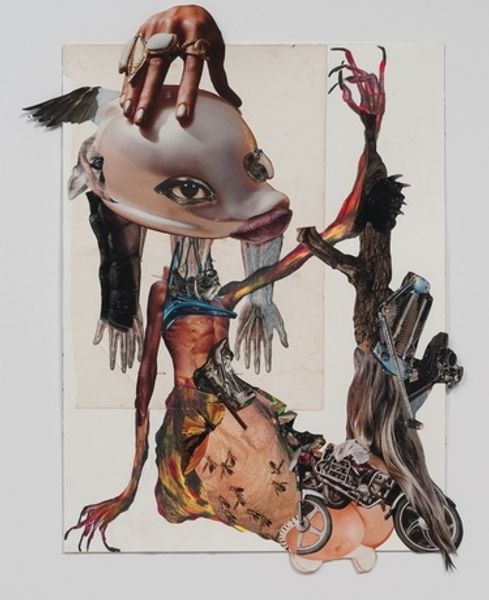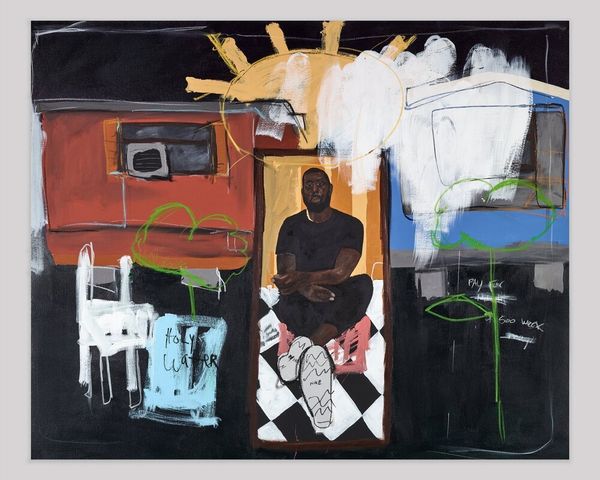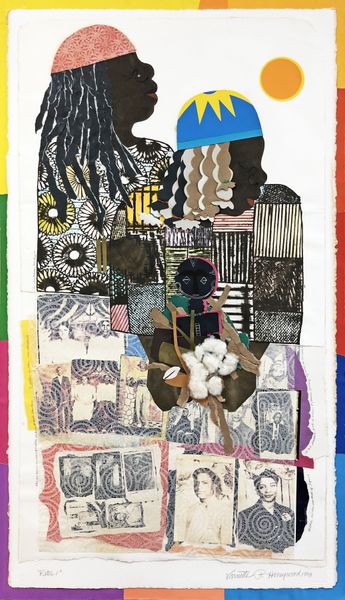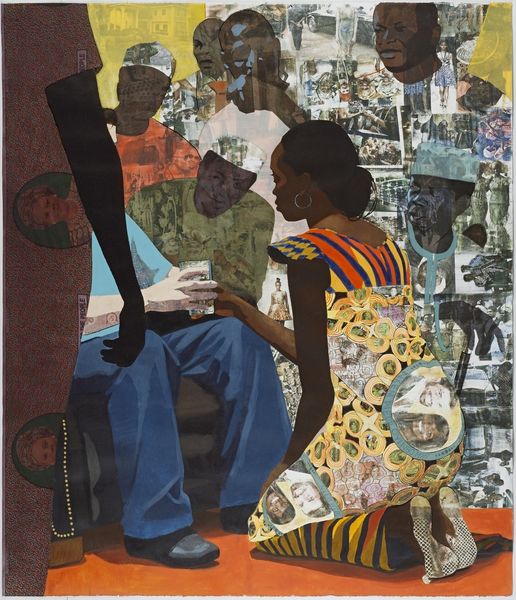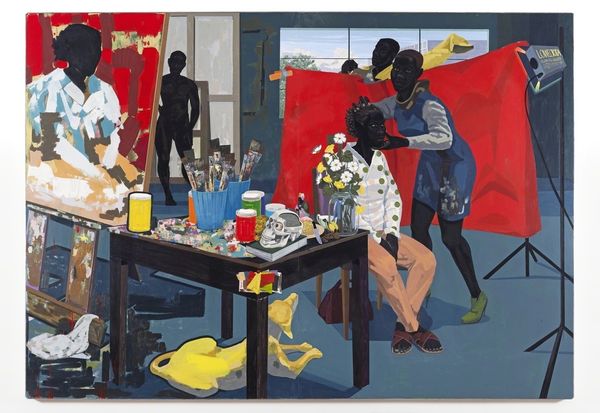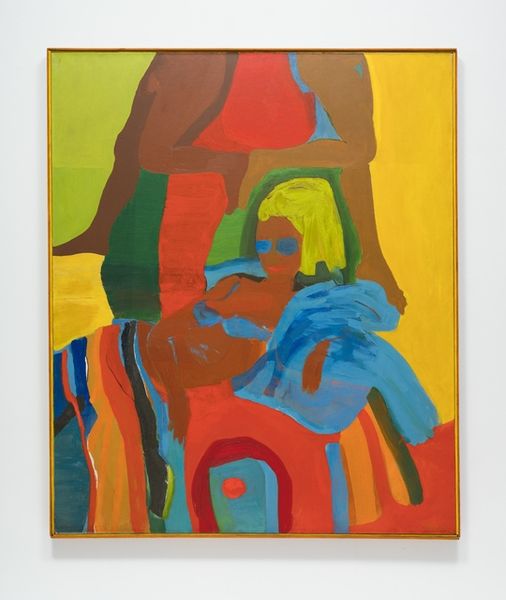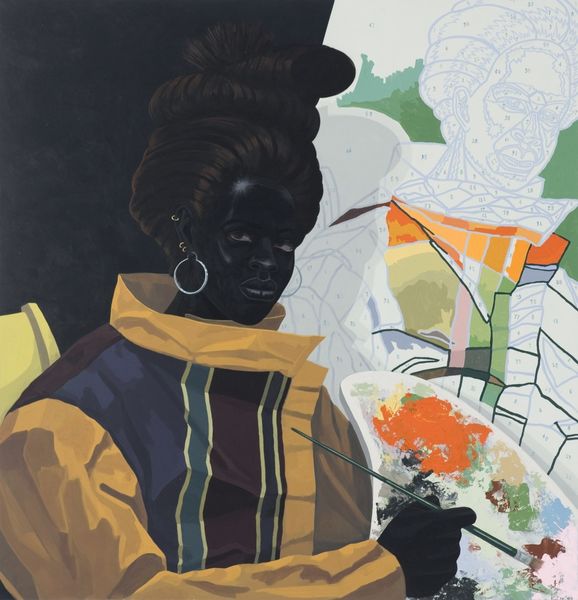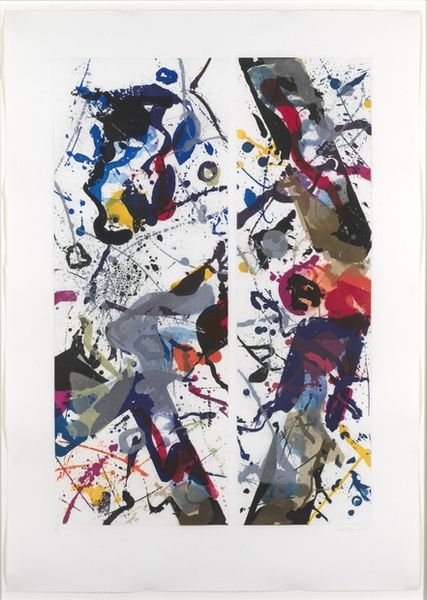
painting, acrylic-paint
#
portrait
#
contemporary
#
painting
#
caricature
#
acrylic-paint
#
figuration
Copyright: Jammie Holmes,Fair Use
Curator: The painting here, titled "Our Children '1960'," was created by Jammie Holmes in 2020. It's an acrylic on canvas. What strikes you when you first look at it? Editor: There's a poignant sense of stillness, isn't there? A figure, perhaps a young girl, absorbed in an activity, almost as if caught in a fleeting memory. The color palette and unfinished line-work give it an aura of nostalgia and slight melancholy, in my eyes. Curator: Right. It is intriguing how Holmes gives a nod to figuration while seemingly situating this subject in a past. It seems that Holmes frequently engages themes of childhood and remembrance within the framework of the African American experience, often referencing historical contexts. How do the symbols in this image resonate, would you say? Editor: Immediately, I'm drawn to the inscription of '25¢'. Coupled with 'baby butt' scrawled on the adjacent surface, it evokes not just commodity but also questions around commodification. A 25 cent vending machine dispensed images of scantily clad women to appeal to youth in 1960; these references suggest both innocence and loss of innocence. How are these meanings coded? Curator: Yes, Holmes layers these symbols thoughtfully, nodding to both familiar commercial imagery and the private moments of play, but I think this can be situated within a longer artistic tradition. Consider how artists during the Harlem Renaissance also depicted children, but always with a sense of dignity and aspiration, reacting against pervasive racist caricatures. Does this, perhaps, re-present these traditions? Editor: Absolutely, in my opinion it directly speaks to a re-envisioning of those pictorial and psychological elements. Holmes here presents this interiority but filtered through a more fragmented lens, and is deeply unsettling due to its use of the figure’s stare to meet the viewer’s own. This is more than simply representation; this, I believe, attempts to depict and explore Black female personhood on the interior level. Curator: A lot to think about. This contemporary work really opens up channels for dialog. Editor: It makes you see how imagery functions, not just as visual experience, but as a repository of lived realities and inherited histories, definitely.
Comments
No comments
Be the first to comment and join the conversation on the ultimate creative platform.
